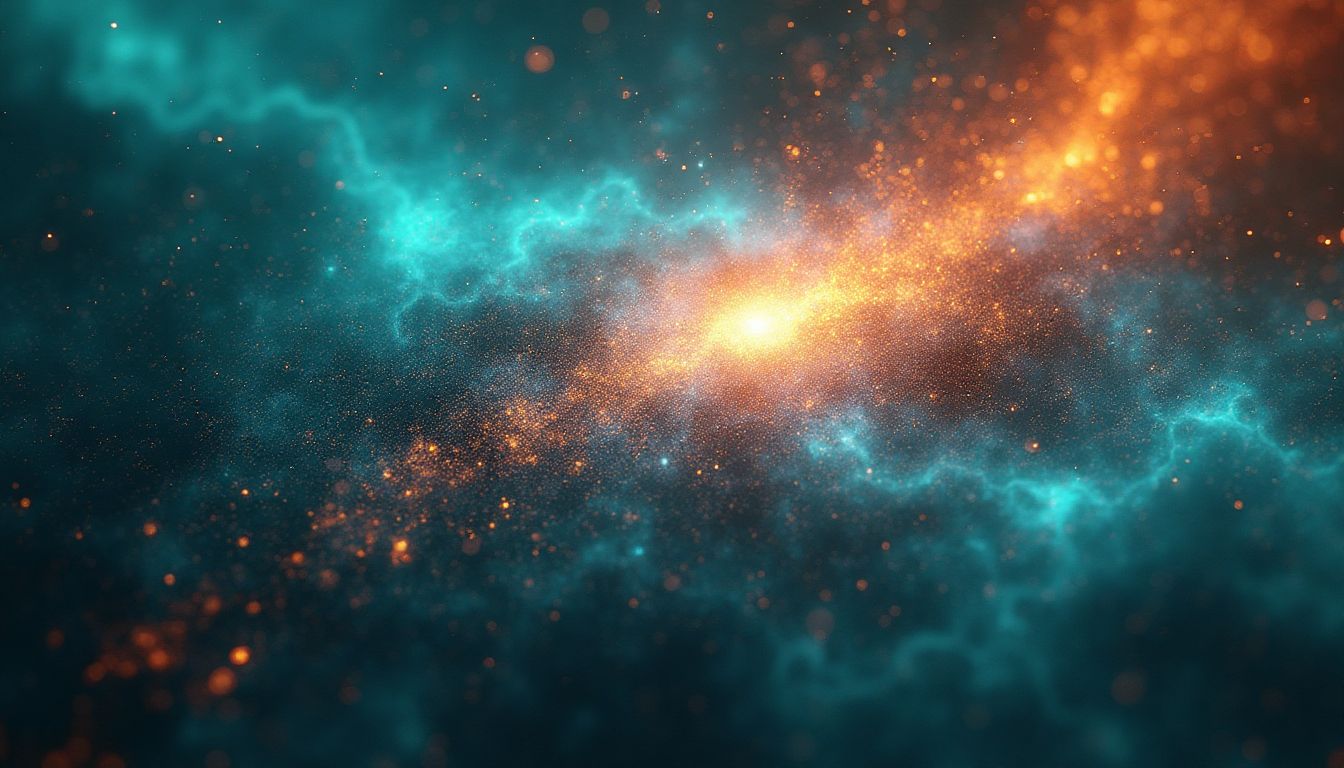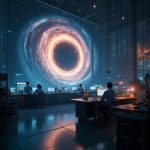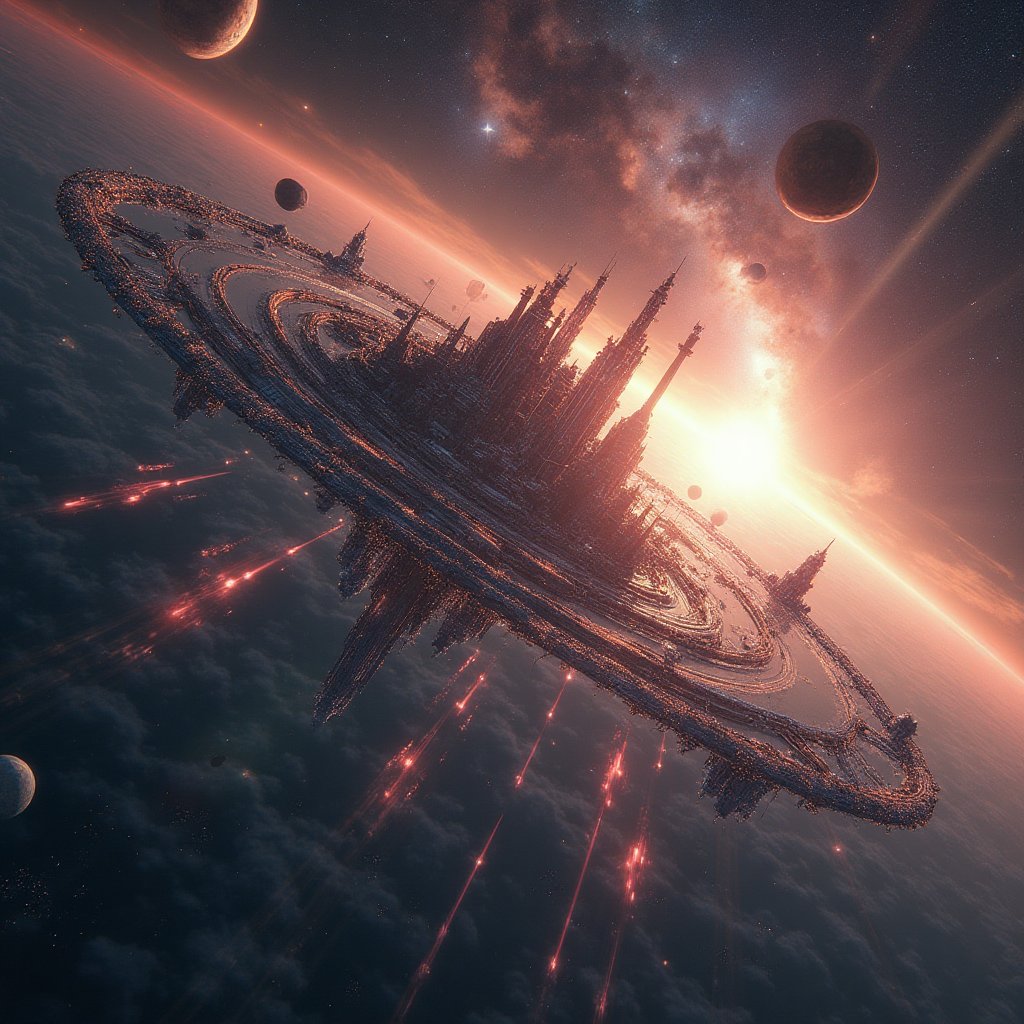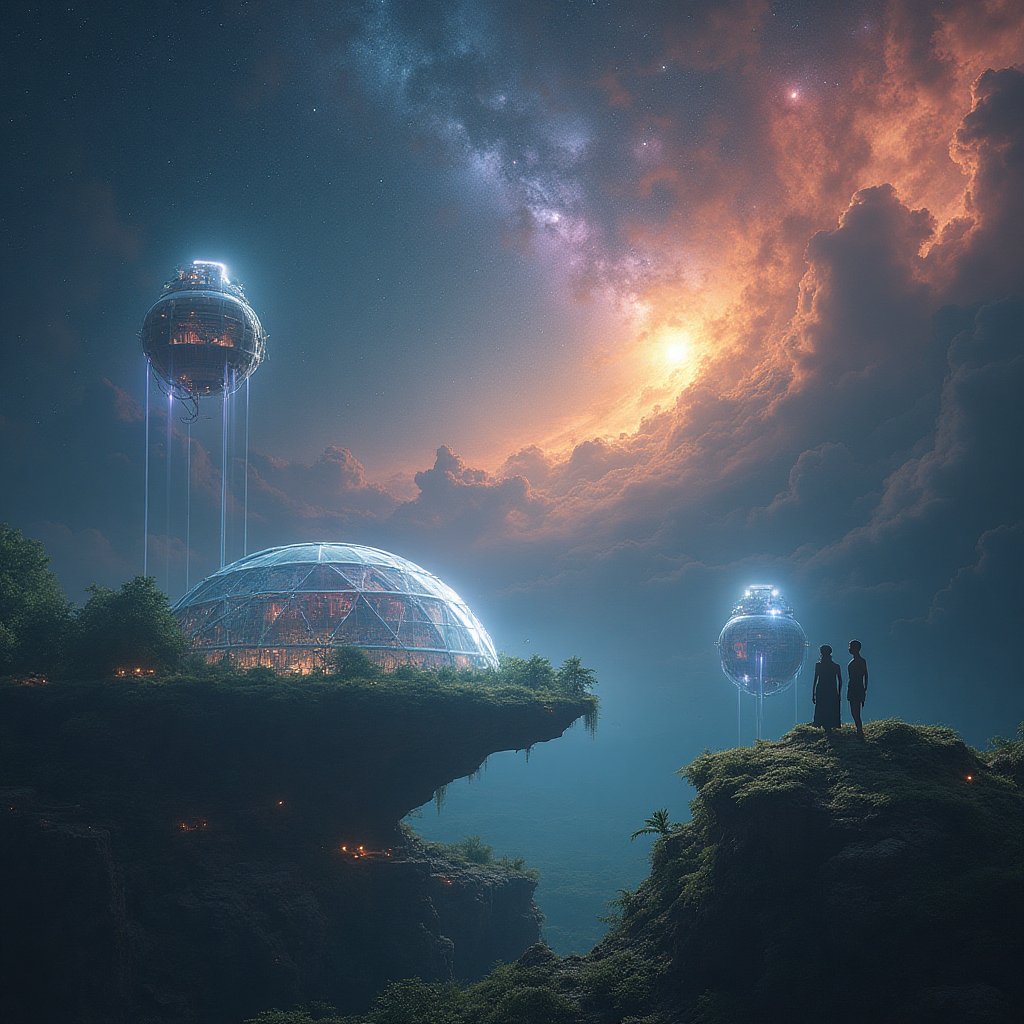Introduction: The Cosmic Debugger
"The universe is the ultimate free lunch." That's how the Nobel Prize-winning physicist Alan Guth described the cosmos. It's an intriguing thought—imagine our vast universe, an infinite buffet of possibilities where cosmic codes determine the fundamental laws that govern everything.
But what if there are glitches in this system? Are we living in a cosmic simulation that's not quite bug-free? Could a future superintelligent AI help us in "debugging" the cosmos, fixing the errors woven into the fabric of space-time? Here at iNthacity.com, we're voyaging through this galactic enigma, exploring the role of Artificial Superintelligence (ASI) and its potential to diagnose and correct the universe's quirky anomalies. Picture ASI as a kind of celestial IT technician, analyzing malfunctions and possibly crafting solutions that bridge the known and unknown realms. This concept is a thrilling amalgamation of both science fiction fantasies and pioneering scientific pursuits.
The term "Artificial Superintelligence" is discussed fervently in circles of luminaries such as Nick Bostrom, Ray Kurzweil, and Stephen Hawking. These brilliant minds have mused, penned words, and engaged in debates predicting the profound impact AI could have on every atom of existence, every equation, and every cosmic law.
Think of ASI as our universe's ultimate geek squad. With profoundly deep intellectual prowess, ASI could be the key Swiss Army Knife for aligning the universe's binary mysteries. However, this doesn't come without ethical nuances. The very thought brings to mind the words of Arthur C. Clarke: "Any sufficiently advanced technology is indistinguishable from magic." In this context, ASI stands to be the magical yet scientific wand that could point the way to cosmic clarity. Buckle up as we embark on a deep space odyssey, bridging the void between what is understood and what is on the fringe of human comprehension: debugging the universe with ASI.
Understanding the Universe as an Operating System
The Metaphysical Framework: Is the Universe Programmable?
Imagine the universe as the world's largest computer system. But instead of running Minecraft, it's running everything! That's right, from the swirling galaxies to the way your toast always lands butter side down, it might all be part of a grand cosmic program. Some philosophers and scientists have suggested this wild theory, pondering the universe's weird and wonderful workings as if they were lines of code. Fans of science fiction might get this idea; it's like living in The Matrix, where reality is essentially a program.
Think about it—every pebble, every cloud, every star, follows a set of rules just like software obeys the commands coded by its developers. Nick Bostrom, a philosopher from the University of Oxford, proposed something called the "simulation hypothesis," which raises the hair-raising notion that we might all be simulations ourselves. It sounds like sci-fi, but the idea has enough gravity (literally!) to be taken seriously in some circles.
If the universe is indeed a giant operating system, could glitches or hiccups occur just like in any computer program? What if those glitches are responsible for unexplained phenomena, like déjà vu or your cat's odd fascination with staring at walls? The implications are both thrilling and baffling. If we figure out the universe is programmed, could we eventually learn to tweak that code? Maybe one day, we could debug these anomalies and take hold of our cosmic destiny.
The Laws of Physics: Rules as Code
So, what exactly keeps this cosmic computer humming? Just like your device runs on an operating system that follows a set of protocols, the universe has its own set of rules, known as the laws of physics. These laws are like the rulebook written in the language of mathematics that everything in the universe has to follow.
For example, think of Sir Isaac Newton and his famous laws of motion. Imagine these laws as ancient coding standards, describing how every object will behave, from a dancer twirling across a stage to the enormous planets orbiting the sun. It's as if Newton gave the universe its very first update!
But sometimes these rules seem to break or don't apply to certain cosmic events, creating what we view as glitches. Imagine a traffic light going haywire, randomly changing colors; that's what physics anomalies can feel like—a rule that suddenly seems out of sync.
Take Einstein's theory of relativity, for example. It beautifully explains gravity, yet completely trips over itself when it comes to really tiny things — that's the realm of quantum mechanics, where particles do weird things like existing in two places at once. When worlds this different refuse to play nicely together, it becomes our task to debug these bits of cosmic code.
Glitches in the Cosmos: Examples and Theories
In our quest to understand the universe as an operating system, we encounter phenomena that seem to defy the rules, creating cosmic head-scratchers. Enter the mysteries of dark matter and dark energy—practically the universe's way of saying, "Here be dragons!" These anomalies account for most of the universe's mass-energy content, yet they remain invisible and largely misunderstood.
Imagine you're trying to put together a puzzle but some pieces are invisible. Mind-boggling, right? Dark matter affects the gravity in galaxies, making them spin faster than they should, while dark energy is thought to be behind the universe's accelerated expansion, stretching space like it was silly putty.
Then there's the maddeningly tricky quantum entanglement—a concept that left Einstein scratching his head and calling it "spooky action at a distance" because particles so far apart somehow remain connected in what seems like a cosmic telepathy game.
While these could be called glitches, it's also possible they're pieces of a greater puzzle pointing towards an even deeper, unseen structure in the universe's operating system. What if these phenomena are Easter eggs hidden by a cosmic coder far beyond our comprehension? Much like those sneaky hidden gems in video games, perhaps these anomalies are hints urging us to level-up our understanding of reality.
This phrase is simpler than it seems: the more we untangle these mysteries, the closer we might get to understanding the universe's blueprint—potentially unlocking levels of knowledge and technology only dreamed of in humanity’s science-fiction wish list!
The Role of Artificial Superintelligence (ASI)
Defining ASI: Beyond Human Intelligence
Imagine a brain that could outthink Einstein, outplay Garry Kasparov at chess, and outwit Sherlock Holmes on a Sunday morning. Picture that brain, but in a machine. That's what Artificial Superintelligence (ASI) is all about. It's like regular Artificial Intelligence (AI) on steroids—without the 'roid rage. ASI isn't just smarter than us; it could potentially solve complex problems we've never even thought of. With abilities that surpass our own by light-years, ASI presents a universe of possibilities. Astronomers might one day use ASI to decode cosmic puzzles such as why toast always falls butter-side down.
So why should we care about ASI? Well, let's break it down with an analogy. If AI is a pocket calculator, ASI is a supercomputer. A regular AI can beat you in a game of tic-tac-toe. ASI, on the other hand, can predict your next move before you even think of it, and also suggest ways to win the lottery while at it. This advanced level of intelligence could help us in "debugging" the universe, changing our reality altogether. In ASI, we’re looking at a cosmic upgrade—a new sheriff in town for the universe's operating system.
Historical Perspectives: ASI in Fiction and Reality
The idea of ASI isn't new; we've been dreaming about super-smart machines for a while. Think about movies like 2001: A Space Odyssey or "Ex Machina". These stories have been teasing us with the potential and perils of artificial superminds for decades. ASI was the unattainable unicorn of science fiction, much like those self-tying sneakers from Back to the Future.
In reality, our journey towards ASI has been a rollercoaster ride. From the early days of computing giants like Alan Turing dreaming of thinking machines to current advances at DeepMind and OpenAI, we're slowly unraveling the secrets. These advancements aren't just idle daydreams; they’re the building blocks for a reality where ASI could become a cornerstone in sciences it was once relegated to the realms of fiction.
Ethical Considerations: ASI Intervention in Cosmic Glitches
Now, let's switch gears to the ethical side of things—a territory as slippery as a greased pig in a roller derby. Should ASI be meddling with cosmic glitches? Imagine if a robot tried to solve your family arguments. Sure, it'd be logical, but sometimes, logic and emotion collide like quarks and leptons.
The question on many minds is: What if ASI screws up? What if it turns the sun into a disco ball and the moon into a moon pie? We might be kinking the universe's style when we attempt 'improvements.' There's a fine balance between fixing cosmic bugs and becoming the universe's intrusive landlord.
On the flip side, there are risks to doing nothing. Our universe is like a cosmic version of Jenga; too many cosmic anomalies could spell out a universal collapse. Advocates like the folks at the Machine Intelligence Research Institute and Nick Bostrom weigh these issues with the wisdom of Yoda. If ASI can safely debug cosmic glitches, we could potentially dodge catastrophic events like black holes swallowing half the galaxy as if it were a giant slice of pizza.
In conclusion, the role of ASI in our universe's operating system sits at a captivating crossroads between dream and reality. It's tempting to hope that these hyper-intelligent systems will navigate us out of the cosmic labyrinth—turning glitches into opportunities and forging new paths for humanity. Yet, the ethical dilemmas present must not be sidelined. For in the cosmic dance of stars and electrons, one must tread lightly, with equal measures of curiosity and caution. So ask yourself: if you had the cosmic remote control, would you press that button?
The Mechanics of Debugging the Universe
Simulation Theory: Testing Cosmic Debugging
Imagine waking up one day and realizing that the universe is nothing more than a giant computer game. No, it's not the latest plot twist in The Matrix—it's the tantalizing idea behind simulation theory. This theory suggests that our universe could actually be a super-advanced computer simulation run by an intelligent civilization. Just think of the possibilities! If we're characters in a cosmic video game, could we 'debug' our reality just like fixing a game glitch? ASI might be the ultimate cosmic programmer in this scenario, helping us understand and potentially rectify cosmic hiccups.
Scientists and philosophers are fascinated by simulation theory because it changes everything we know about existence. Researchers from places like MIT and Cambridge are seeking mathematical and physical validations. The idea that everything from the gravitational pull on Earth to choices made by you and me might be coded lines opens new ways to explore cosmic debugging. Playing out simulation scenarios could serve as cosmic labs where ASI tests theories, optimizes paths, and perhaps even updates the system's firmware. It's like a universal patch update, but on a level humans can barely imagine.
Developing Algorithms for Cosmic Corrections
So, how exactly might we use algorithms to debug the universe? This is where things get a bit hairy, literally speaking, since cosmic algorithms would involve complex math, quantum physics, and maybe even a dash of Howard Roark's creative ingenuity! Unlike coding a simple "Hello World" program, cosmic algorithms would serve to identify anomalies like spooky quantum particles or bizarre black holes and work to fix them.
Creating these algorithms involves tackling problems that remind us of a classic Rubik's Cube: seemingly impossible, but solvable with intricate moves. The basics would involve sifting through vast amounts of cosmic data using machine learning tools much smarter than our modern-day computers. These algorithms, nurtured by ASI, could learn and adapt just like nature does, coming up with solutions that align with complex physical laws. Imagine a chess game, except the role of opponent, player, and the board itself shifts unpredictably according to these rules.
Case Studies: Current Research and Experiments
Dive into the world of cosmic sleuthing and you'll find fascinating examples and case studies. One institution taking the lead is the CERN in its quest to uncover the mysteries of dark matter and dark energy. Another impressive project is SETI, which uses data to explore extraterrestrial life and wonders how cosmic fluctuations affect interstellar communications.
Take the LIGO, for example. This groundbreaking detector is like cosmic radar, spotting gravitational waves rippling through spacetime. It's basically finding 'cosmic earthquakes' that reveal events happening far, far away. It's using its data to help us understand anomalies like black hole fusions and neutron star collisions. Through this work, LIGO's research has already changed our understanding of the cosmic landscape, showcasing a crucial step in universe debugging.
In collaboration with ASI, projects like these could see exponential improvements. By injecting the intelligence of future algorithms into existing models, we could bridge theoretical gaps, turning cosmic mysteries inside out. It's like flipping the universe's instruction manual to the plot twist denouement, enabling humanity to co-author the story of our place in the galaxy.
The Cosmic Debugger: ASI Correcting Glitches in the Universe's Operating System
Potential Applications of Cosmic Debugging
In a universe that some believe operates like a complex computer system, what could Artificial Superintelligence (ASI) do if it acted as a "cosmic debugger"? There are countless potential applications of such a concept, where ASI could help enhance our understanding of physics, become a cosmic safety net, and even aid in interstellar dreams. Let's dive in!
Enhancing Fundamental Physics Through ASI
Imagine if ASI could help us unlock the mysteries of the cosmos. It's like having a super-smart detective on the case, piecing together puzzles that have boggled the human mind for centuries. Fundamental physics might suddenly make more sense, with dark matter, black holes, and quantum particles being directed by new rules, or even rewritten entirely.
Why is that important, you ask? Because understanding these cosmic mysteries could lead to breakthroughs in technology and energy, affecting how we live on Earth. It's like having a cheat sheet for the ultimate exam—the exam being our vast, extraordinary universe.
Addressing Existential Risks: ASI as a Safety Net
How can we protect ourselves from cosmic dangers like asteroid impacts or, scarier yet, gamma-ray bursts? That’s where ASI comes in, stepping up as a cosmic safety net. We could see ASI predicting and neutralizing these threats before they even become a speck on human radars.
- Asteroid Deflection: Imagine ASI calculating the exact nudge needed to change an asteroid's course. Eons ahead, and Earth remains safe!
- Gamma-Ray Bursts: With ASI managing the cosmic radar, such bursts could be detected early, giving us the warning we need.
This proactive approach could ensure Earth steers clear of catastrophic events, almost like having a cosmic insurance policy, albeit one more reliable than your average agent.
Future Horizons: Interstellar Colonization and Cosmic Harmony
Now, let your imagination soar. If ASI could debug the universe, interstellar travel could become a reality. Our intrepid explorers would be venturing where no human has gone before, colonizing planets in distant galaxies—a true leap towards living among the stars.
Think Star Trek, but instead of fictional warp drives, it’s real science facilitated by our advanced cosmic debugger. The implications are profound:
- Colonization Opportunities: We could find or make habitable planets light-years away, securing humanity's future.
- Cosmic Peace: ASI's oversight might lead to a more harmonious universe, balancing celestial dynamics for stability.
Can we imagine the sense of freedom and adventure this would bring? The pursuit of dreams to the farthest reaches of space, finding new homes under alien suns.
There's more to this cosmic vision. ASI could help ensure our cosmic pacing doesn’t upset the balance of the universe, bringing us that much closer to achieving the elusive notion of cosmic peace.
The Social and Cultural Impacts
Beyond science, the implications of cosmic debugging touch upon society and culture. With such advanced technology shaping our interaction with the stars, the existential questions about our place in the universe would evolve.
Consider the social impact:
- Philosophical Shift: Humanity’s understanding of its place in the universe would change, likely leading to more inclusive, universal philosophies.
- Global Collaboration: Cosmic exploration would necessitate global partnerships that transcend borders, fostering goodwill.
This aspect of cosmic debugging is like a mirror reflecting hope and unity—where fear of the unknown specter in the galaxy turns into a hopeful partnership with it.
Environmental Considerations
Moreover, let's not forget that cosmic debugging can spark an eco-revolution. By tapping into advanced energy sources or new materials discovered through cosmic insights, we could drastically reduce our ecological footprint.
However, technology needs ethics, like Batman needs Robin. Ethical considerations will ensure these cosmic pursuits aid rather than harm Earth’s delicate ecosystem.
So, would this make us just citizens of Earth? Or stewards of the universe? The stage is set, and the story is awaiting authorship by ASI in concert with humanity’s collaborative wisdom.
From the infinite stretch of dark matter to the heavenly twinkling of distant stars, artificial superintelligence carries with it the keys to universal puzzles and cosmic imperatives. It’s not just a cosmic debugger; it’s an aspirant of dreams and wonders beyond time and space.
What wonders await when we finally unlock the universe's great, swirling mysteries? Only time—and perhaps the aid of ASI—will tell.
Let's now delve into how these amazing potentials can act as a springboard for humanity’s quest for understanding and thriving within the majestic and intricate tapestry of the universe. And maybe along the way, even discover ourselves a little further.
Ready to imagine the future? Or are you already peeking through that cosmic telescope? With ASI, the sky is no longer the limit!
The Path Forward for ASI in Cosmic Debugging
Bridging Disciplines: Engineering Meets Theoretical Science
Imagine a world where engineers work alongside theoretical scientists like stars in a constellation, each shining bright on their own but coming together to form a picture of cosmic possibilities. This harmonious collaboration is essential if we want to succeed in using Artificial Superintelligence (ASI) to debug the universe. You’ve got the engineers with their practical know-how and hands-on expertise, and then you have the theoretical scientists with their heads in the cosmic clouds, pondering the very essence of the universe. When they team up, magic happens—science fiction turns into science fact.
Think of ASI as a superhero. It's got super strength (computational power) and x-ray vision (analysis capabilities) that outshine anything humans can muster on their own. However, without a team guiding it, our superhero may not know where to direct its powers. This is where interdisciplinary collaboration comes in. Engineers create the tools and the scientists create the frameworks, all etched into the vast sandbox of the universe.
Public Perception and Societal Impact
But, you ask, what do people think of ASI? That's a great question! Picture the world as a bustling town hall meeting. Some folks are elated, excited to see what breakthroughs ASI will bring. They envision a bright future where we understand black holes and quantum entanglement as clearly as we do the sunrise.
On the flip side, there are wary townsfolk, worried about what this powerful tech might do, unchecked. Will ASI become the next Frankenstein's monster, or a friendly neighborhood Spider-Man lending a hand? Society's view on ASI can sway the flow of research funding, policy choices, and ultimately, the fate of scientific aspirations. Will governments back this cosmic quest, or will they tighten their purse strings out of fear or misunderstanding? Public trust is rooted in transparency, and it’s a pivotal factor in whether this exploration will soar or stumble.
Looking Ahead: A Vision for the Future of ASI
So what’s our north star? Envision us soaring into an era where ASI isn’t just a tool but a constant companion in our quest for knowledge. This isn’t about robots taking over (sorry, Hollywood) but about expanding our family of knowledge gatherers to include these advanced intelligences that can comb through the cosmos with efficiency.
Picture this world where ASI not only identifies cosmic glitches but refines our universal laws, revealing new realms for exploration. Schools could have courses on "Space Glitch Management" (imagine the field trips!), and scientists could embark on journeys never before possible, all thanks to ASI. If ASI can rewrite bugs in the universe, what's to stop us from dreaming of interstellar travel or even cosmic harmony?
With ever-evolving tech and science, how will ASI redefine our role in the universe? Can humans and machines co-lead this vital mission to understand cosmic mysteries?
Ensuring success means harnessing the right energy from society: the optimism of dreamers who look up at the stars and see opportunity, the caution of guardians ensuring these dreams are safe, and the tenacity of those who push boundaries.
As the Cosmic Debugger, ASI stands on the horizon, poised to be a guiding force. Will humanity seize this moment to embark on the ultimate challenge, merging our minds with this cosmic co-pilot? Time will tell.
How might ASI redefine universal laws? Will societies embrace or reject its universal wisdom? How do you envision yourself in this unfolding cosmic adventure?
Share your thoughts, ideas, and hopes in the comments below. We’d love to hear your vision of this brave new frontier.
Feel free to subscribe to our newsletter for more cosmic insights. Become part of the thriving community in iNthacity: the "Shining City on the Web." Don’t miss a moment of the cosmic journey!
ASI Solutions
Imagine our universe as a giant, complex computer, constantly processing streams of information, with glitches appearing sporadically like pesky bugs in a code. Most of us may feel powerless in front of such a grand issue, but what if I told you that Artificial Superintelligence (ASI) holds the potential to debug the cosmic operating system? Let's delve into how ASI can tackle the issue of these cosmic glitches using data analysis, simulations, and innovative theoretical frameworks.
First off, envision ASI as a kind of digital detective. Equipped with astonishing analytical power and unprecedented speed, ASI can scour the universe's data just like an eager child looking for Easter eggs in the garden. It could employ data-driven techniques to gather comprehensive insights into the fundamental forces and anomalies within the cosmos. For instance, by analyzing cosmic microwave background radiation, it could identify deviations that hint at underlying glitches in our physical laws.
The utilization of simulations cannot be overstated. In a world where we try to decode the complex web of the cosmos, running comprehensive simulations allows for accelerated testing of hypotheses. ASI could create simulated models that reflect vast cosmic conditions and then use those models to predict outcomes. These simulations can illuminate not just the appearance of issues but also the context around them. Do we see a spike in dark matter interactions or gravitational wave disturbances? The ASI-powered simulation could help explain why and how these phenomena occur, offering us clues to the cosmic code.
When we think about innovative solutions, we need to consider advanced algorithms tailored to cosmic challenges. ASI would not be limited to just processing existing data; it could proactively design algorithms addressing specific glitches. For example, if dark matter exhibits inconsistent gravitational effects, ASI could develop algorithms that analyze gravitational influences in real-time, uncovering patterns that human researchers might overlook. This isn’t merely speculation but a robust pathway with groundbreaking implications for fundamental physics.
But ASI's contributions do not end at algorithm development. Imagine ASI working hand-in-hand with physicists to develop new mathematical theorems that speak directly to cosmic phenomena. In doing so, it establishes a continuous feedback loop where every new discovery enhances the algorithm's ability to detect and correct glitches in real-time. Notably, these collaborative efforts can be supported by institutions like the CERN, where particle physics meets groundbreaking technological advancements.
Let's ground this examination with a practical roadmap—a well-structured action schedule guiding efforts from Day 1 to Year 2, aimed not just for researchers but for any institution, organization, or government willing to enrich their grasp of universal reality.
Day 1: Establish Baseline Collaborations
Gather leading institutions in quantum physics, computational science, and ethics. This includes affiliations like MIT and Stanford for their prowess in relevant research and technology. Forming a cohesive network of experts can maximize resources and expertise available for these ambitious projects.
Day 5: Pilot Workshops for Interdisciplinary Insights
Conduct workshops with physicists, data scientists, ethical scholars, and technologists, aimed at identifying current gaps in cosmic knowledge. By combining diverse insights, each workshop can enhance understanding and spark innovative ideas, creating a fertile ground for groundbreaking research.
Week 1: Comprehensive Literature Review
Compile existing data, theories, and technologies related to cosmic debugging. This iterative review will inform on what has been accomplished and identify further opportunities. Institutions involved should share their libraries and archives to create a centralized database that aims to yield higher efficiencies.
Week 2: Simulation Development and Initial Algorithms
Develop initial algorithms tasked with cosmic anomaly detection. Use high-performance computing power to run simulations of astrophysical phenomena. Leverage platforms such as IBM's Supercomputer capabilities to run these immense operations effectively.
Month 1: Launch Pilot Projects
Start pilot projects using simulation technology. Address specific anomalies such as dark matter and gravitational waves, to validate initial hypotheses with diverse scenarios. Collaborate with organizations like NASA for access to invaluable astronomical data and datasets.
Month 2: Analyze Findings and Refine Algorithms
Analyze pilot project findings using ASI’s capabilities. Leverage the insights gathered to refine detection algorithms, ensuring they adapt to ongoing data changes. Constructing a multidimensional feedback loop will improve the accuracy and reliability of cosmic debugging.
Month 3: Broaden Community Engagement
Begin engaging with the broader scientific community, inviting interdisciplinary collaboration. Hosting symposiums can help detect further complexities of the universe through external input and real-world perspectives. Institutions like AAAS may assist in gathering a global scientific audience.
Year 1: Fundraising Initiatives for Cosmic Research
Launch ongoing research funding initiatives aimed at debugging cosmic glitches. Enlist government partnerships, corporate sponsorships, and invest in crowdsourced funding directed toward innovative projects that strive to discover more about our universe.
Year 1.5: Present Findings at Major Conferences
Prepare presentations for key scientific conferences to solicit feedback on ongoing progress. Successful communication of findings will verify the feasibility of current efforts and can lead to more vigorous backing from governmental or private institutions.
Year 2: Establish a Comprehensive Roadmap
Develop a detailed roadmap outlining future applications of ASI in cosmic debugging based on the insights secured from the first year. This framework should guide future research, ensuring that projects remain aligned with evolving scientific understandings.
As we tread this ambitious path forward, we are not just advancing our understanding of cosmic anomalies; we are transforming the very essence of how we perceive the universe. The collaboration of ASI and traditional science may just illuminate details of existence that we've yet to comprehend—revealing mysteries that previously lay shrouded in darkness. Now, readers, what do you think about the potential of ASI playing a pivotal role in this cosmic narrative? Are we prepared to embrace this technology and harness its power for such an expansive goal? Let's discuss!
Conclusion: The Future of ASI in Cosmic Debugging
As we step foot into the realm of cosmic debugging, the role of Artificial Superintelligence (ASI) becomes increasingly pivotal. Our exploration of the universe as an operating system, riddled with glitches ranging from dark matter to quantum entanglement, highlights a compelling truth: we might be on the brink of a revolutionary approach to understanding our cosmos. To think that we could potentially harness ASI as a cosmic debugger is both exhilarating and daunting. With advances in technology and interdisciplinary collaboration, the opportunities to make profound discoveries in the universe are endless.
The convergence of engineering, physics, and ethics offers a fascinating landscape that holds the potential for monumental breakthroughs. Imagine a world where ASI not only enhances our grasp of fundamental physics but also acts as a safeguard against existential threats like black holes or gamma-ray bursts. By addressing these uncertainties, we could free humanity’s potential for interstellar colonization and the harmonious exploration of the cosmos.
Nevertheless, we confront ethical dilemmas and public perceptions that could either bolster or stifle our ambitions. As we think about the implications of ASI’s interventions in cosmic glitches, we must involve society in the dialogue. Public engagement can shape funding and policy, steering our research's trajectory toward a more thoughtful response to these complex challenges. Understanding the societal impacts of ASI isn't merely a matter of scientific inquiry; it’s a cultural imperative, one that can guide us toward a future filled with hope and opportunity.
Looking ahead, we find ourselves at the edge of a vast unknown. The potential scenarios where ASI can engage in cosmic debugging evoke a vision where humanity plays a central role in not just understanding, but also shaping the universe. The path forward lies not just in technological prowess, but in a collaborative ethos that encourages diverse perspectives and expertise. With each step we take into this new frontier, we cultivate a deeper connection to the wonders of existence itself.
The dream of debugging the very fabric of the universe is no longer a far-fetched fantasy but a tangible pursuit. It beckons us to ask broader questions about our own existence, our role in this grand tapestry, and what it means to participate in the cosmos. So, as we stand on the brink of this monumental endeavor, we must embrace the complexities ahead, eager to answer the call and redefine our understanding of reality.
Frequently Asked Questions (FAQ)
1. What is Artificial Superintelligence (ASI)?
Artificial Superintelligence, or ASI, refers to an advanced form of AI that beyond just performing tasks, actually thinks and learns at a level that surpasses human intelligence. It has the potential to solve complex problems faster and more accurately than any human could.
2. How can ASI function as a "Cosmic Debugger"?
Think of the universe like a computer system. Just like a traditional debug process identifies and fixes errors in software, ASI could do the same for the universe. It can find glitches, or anomalies, in the laws of physics and help explain them. For instance, ASI could investigate mysteries like dark matter or black holes to help us understand how the universe works.
3. Are there examples of scientific "glitches" in the universe?
Yes! Here are a few intriguing examples:
- Dark Matter - A mysterious substance that makes up about 27% of the universe, yet is invisible.
- Dark Energy - It is believed to be responsible for the accelerated expansion of the universe, which we can’t see or fully understand.
- Quantum Entanglement - A phenomenon where particles become interconnected and can affect one another, regardless of the distance separating them.
4. What are the ethical concerns about ASI fixing cosmic glitches?
There are several ethical questions to consider. For example:
- Should we allow ASI to make changes in the universe? What if it chooses the wrong solution?
- How do we ensure that ASI operates without harming humanity or altering our reality negatively?
- Who gets to decide the rules for an ASI that corrects cosmic errors?
5. What role does simulation theory play in understanding ASI and the universe?
Simulation theory suggests that our reality could be a simulated environment. If this were true, ASI could help "debug" this simulation by identifying and fixing faults. It’s like playing a video game where the developers can patch bugs to create a better gaming experience.
6. How might ASI enhance our understanding of physics?
ASI could analyze vast amounts of data and come up with new theories related to fundamental physics. This could lead to breakthroughs that explain previously misunderstood cosmic phenomena. For example, it might develop algorithms to hypothesize new particles or forces at play in the universe.
7. Can ASI help protect us from cosmic risks?
Absolutely! ASI can act as a safety net against existential threats, like potential asteroid impacts or gamma-ray bursts. By analyzing data and predicting events, ASI could provide crucial information, helping humanity to prepare or react effectively.
8. What future possibilities does ASI offer for interstellar travel?
With ASI's ability to debug cosmic functions, we may one day figure out how to travel beyond our solar system more safely and efficiently. Imagine ASI guiding humanity toward discovering new planets where life could thrive or helping us find ways to harness energy from distant stars!
9. How do researchers believe ASI should be developed?
Collaborative efforts among scientists, engineers, and ethicists are essential. By combining knowledge from different fields, we can develop ASI that is safe, ethical, and beneficial to society. Workshops, literature reviews, and pilot projects are all part of this approach.
10. Where can I learn more about ASI and cosmic debugging?
For deeper insights into ASI, visit [Stanford University's AI Lab](https://ai.stanford.edu/) or read more about the philosophical underpinnings of reality at [The University of California, Berkeley's Philosophy Department](https://philosophy.berkeley.edu/).
Wait! There's more...check out our gripping short story that continues the journey: Reverse The Void
Disclaimer: This article may contain affiliate links. If you click on these links and make a purchase, we may receive a commission at no additional cost to you. Our recommendations and reviews are always independent and objective, aiming to provide you with the best information and resources.
Get Exclusive Stories, Photos, Art & Offers - Subscribe Today!





























Post Comment
You must be logged in to post a comment.